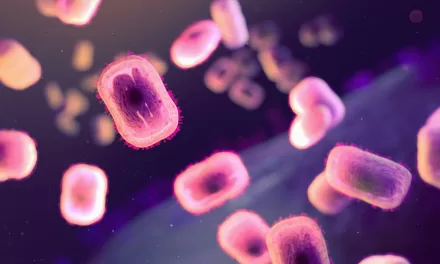Reusable water bottles have become a popular and eco-friendly accessory, but they also pose health risks if not cleaned regularly. Here’s what you need to know to keep your water bottle germ-free and safe.
The Appeal and Downsides of Reusable Water Bottles
Reusable water bottles, like the trendy Stanley tumbler, have gained popularity as a sustainable alternative to single-use plastic bottles. However, their convenience comes with a potential downside—they can harbor germs and accumulate gunky buildup over time.
A recent TikTok video highlighting the discovery of mold-like spots on the small parts of a dismantled Stanley bottle has brought attention to the issue. Health experts warn that neglecting to clean your water bottle regularly increases the risk of microbes, bacteria, and mold thriving in the moist environment.
The Health Hazards of Grimy Water Bottles
While the chances of a dirty water bottle causing a pathogenic infection are relatively slim, it’s not zero probability, according to Donald Schaffner, PhD, a professor of food science at Rutgers University. A germ-infested water bottle could potentially pose health risks, making it crucial to address the issue.
How Often Should You Clean Your Water Bottle?
Experts recommend washing your water bottle regularly to prevent the buildup of germs and microbes. The frequency of cleaning depends on factors such as daily usage, storage conditions, and the material of the bottle. Washing your bottle weekly or every couple of days is considered reasonable if used daily, but factors like storage in a backpack or purse may require more frequent cleaning.
Martin Bucknavage, a senior food safety extension program specialist at Penn State University, suggests cleaning your water bottle at the end of each day it’s used, emphasizing the importance of maintaining good sanitary standards.
The Best Method for Washing Your Water Bottle
The dishwasher is considered one of the most effective ways to clean a water bottle, provided it’s dishwasher safe. Hand-washing with soap, bottle brushes, and tools like toothbrushes can also work well, especially for reaching tiny grooves and crevices where bacteria may hide.
Occasionally sanitizing your bottle using scalding water, white vinegar, or a diluted chlorine solution can be helpful. The key is to ensure your bottle air-dries thoroughly to eliminate any remaining moisture.
Signs You Need to Wash Your Water Bottle More Often
Funky smells, residue buildup, dark spots, or gray-blackish slimy scum are signs that your water bottle needs a thorough cleaning. These may indicate the presence of mold or biofilm, and ignoring these signs could compromise your health and the taste of your water.
What Can Happen If You Don’t Regularly Wash Your Water Bottle?
While the risk of serious illness from a dirty water bottle is low, neglecting regular cleaning may lead to unpleasant odors, off-tasting water, or visible mold. Most bacteria from your mouth or the environment are harmless, but bacterial infections can cause gastrointestinal symptoms like vomiting and diarrhea.
For individuals with mold allergies or asthma, inhaling mold spores may trigger irritation of the eyes, nose, sinuses, and lungs. While the risk is generally low, maintaining good hygiene practices for your water bottle is essential for overall health and well-being.
In conclusion, the convenience of reusable water bottles comes with responsibilities. Regular cleaning and proper hygiene practices ensure that your water bottle remains a safe and healthy accessory.












